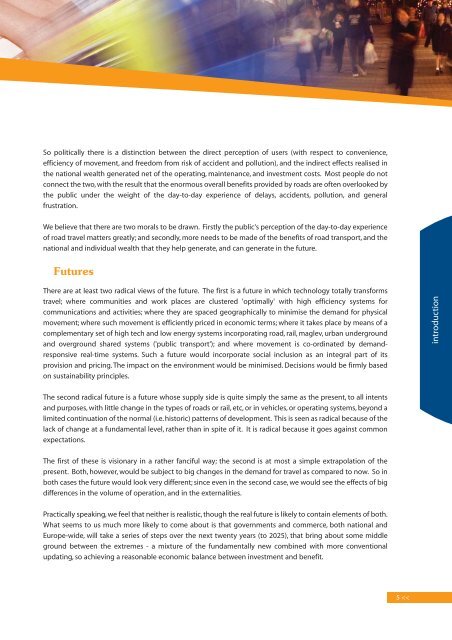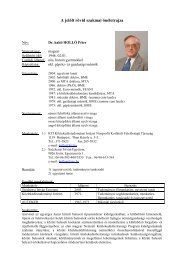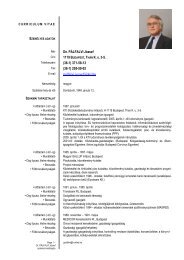VISION: Road Transport in Europe 2025 - FEHRL
VISION: Road Transport in Europe 2025 - FEHRL
VISION: Road Transport in Europe 2025 - FEHRL
You also want an ePaper? Increase the reach of your titles
YUMPU automatically turns print PDFs into web optimized ePapers that Google loves.
So politically there is a dist<strong>in</strong>ction between the direct perception of users (with respect to convenience,<br />
efficiency of movement, and freedom from risk of accident and pollution), and the <strong>in</strong>direct effects realised <strong>in</strong><br />
the national wealth generated net of the operat<strong>in</strong>g, ma<strong>in</strong>tenance, and <strong>in</strong>vestment costs. Most people do not<br />
connect the two, with the result that the enormous overall benefits provided by roads are often overlooked by<br />
the public under the weight of the day-to-day experience of delays, accidents, pollution, and general<br />
frustration.<br />
We believe that there are two morals to be drawn. Firstly the public's perception of the day-to-day experience<br />
of road travel matters greatly; and secondly, more needs to be made of the benefits of road transport, and the<br />
national and <strong>in</strong>dividual wealth that they help generate, and can generate <strong>in</strong> the future.<br />
Futures<br />
There are at least two radical views of the future. The first is a future <strong>in</strong> which technology totally transforms<br />
travel; where communities and work places are clustered 'optimally' with high efficiency systems for<br />
communications and activities; where they are spaced geographically to m<strong>in</strong>imise the demand for physical<br />
movement; where such movement is efficiently priced <strong>in</strong> economic terms; where it takes place by means of a<br />
complementary set of high tech and low energy systems <strong>in</strong>corporat<strong>in</strong>g road, rail, maglev, urban underground<br />
and overground shared systems ('public transport'); and where movement is co-ord<strong>in</strong>ated by demandresponsive<br />
real-time systems. Such a future would <strong>in</strong>corporate social <strong>in</strong>clusion as an <strong>in</strong>tegral part of its<br />
provision and pric<strong>in</strong>g. The impact on the environment would be m<strong>in</strong>imised. Decisions would be firmly based<br />
on susta<strong>in</strong>ability pr<strong>in</strong>ciples.<br />
The second radical future is a future whose supply side is quite simply the same as the present, to all <strong>in</strong>tents<br />
and purposes, with little change <strong>in</strong> the types of roads or rail, etc, or <strong>in</strong> vehicles, or operat<strong>in</strong>g systems, beyond a<br />
limited cont<strong>in</strong>uation of the normal (i.e. historic) patterns of development. This is seen as radical because of the<br />
lack of change at a fundamental level, rather than <strong>in</strong> spite of it. It is radical because it goes aga<strong>in</strong>st common<br />
expectations.<br />
The first of these is visionary <strong>in</strong> a rather fanciful way; the second is at most a simple extrapolation of the<br />
present. Both, however, would be subject to big changes <strong>in</strong> the demand for travel as compared to now. So <strong>in</strong><br />
both cases the future would look very different; s<strong>in</strong>ce even <strong>in</strong> the second case, we would see the effects of big<br />
differences <strong>in</strong> the volume of operation, and <strong>in</strong> the externalities.<br />
Practically speak<strong>in</strong>g, we feel that neither is realistic, though the real future is likely to conta<strong>in</strong> elements of both.<br />
What seems to us much more likely to come about is that governments and commerce, both national and<br />
<strong>Europe</strong>-wide, will take a series of steps over the next twenty years (to <strong>2025</strong>), that br<strong>in</strong>g about some middle<br />
ground between the extremes - a mixture of the fundamentally new comb<strong>in</strong>ed with more conventional<br />
updat<strong>in</strong>g, so achiev<strong>in</strong>g a reasonable economic balance between <strong>in</strong>vestment and benefit.<br />
5






